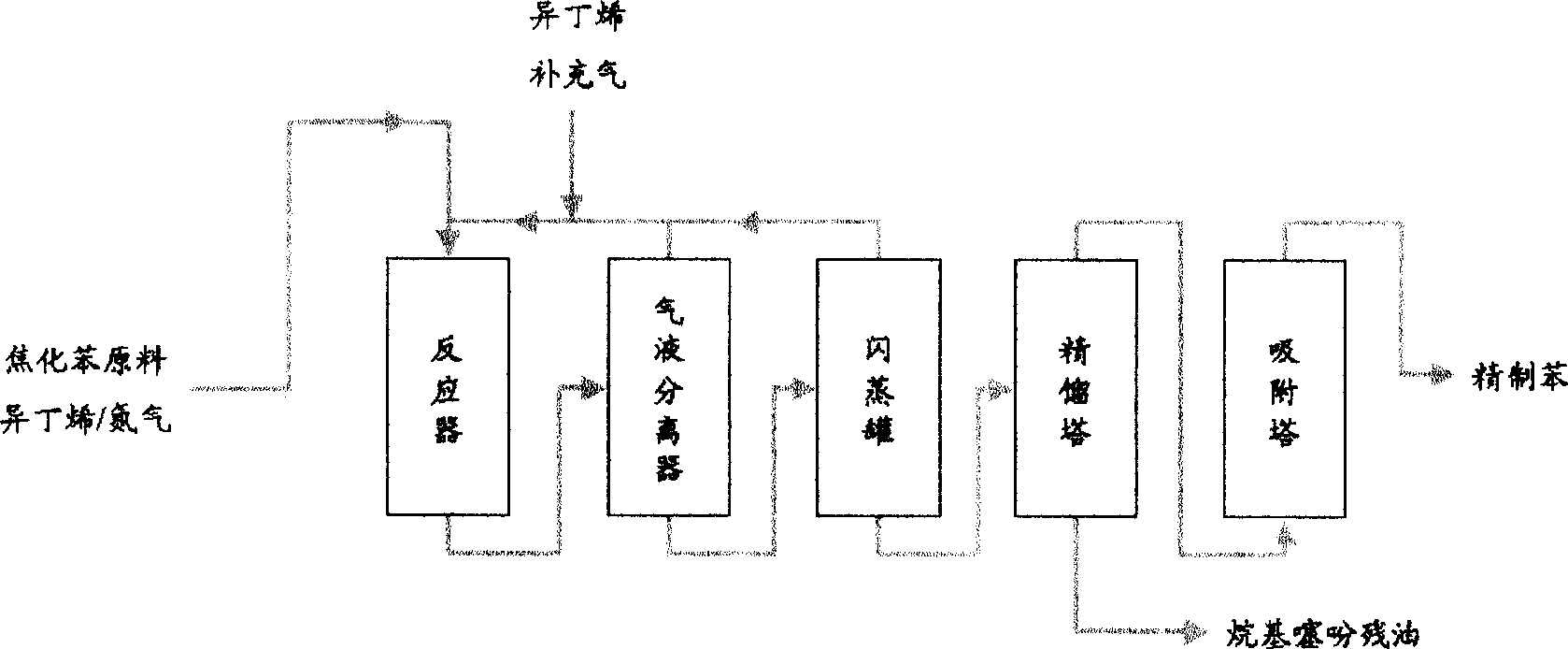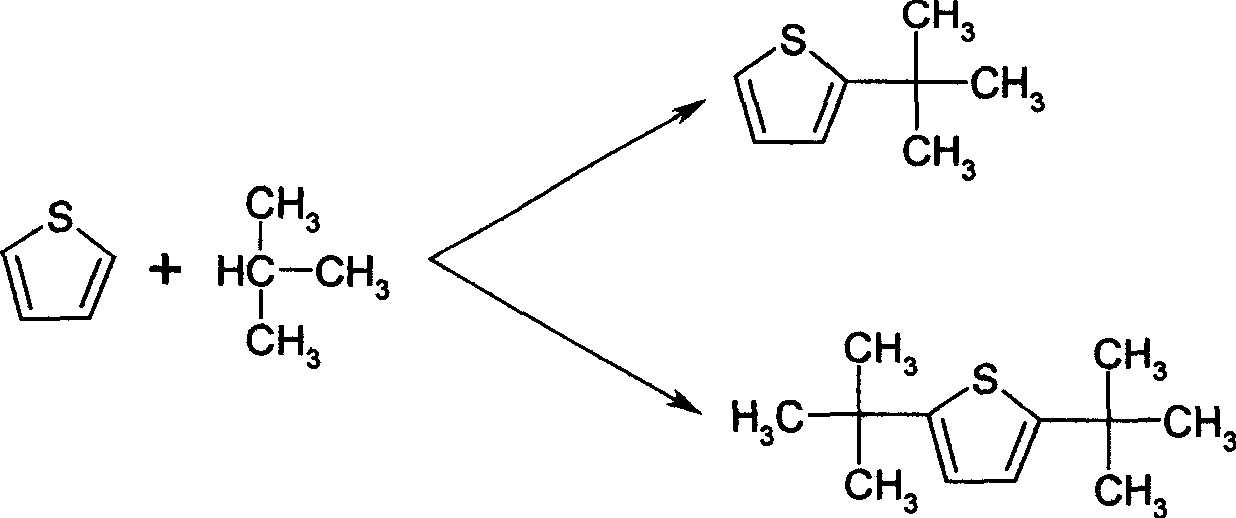Coking benzene deep desulfuration purification method
A technology for deep desulfurization and coking of benzene, applied in chemical instruments and methods, organic chemistry, hydrocarbons, etc., can solve the problems of inability to completely remove thiophene, short regeneration cycle of adsorbents, harsh reaction conditions, etc. Mild conditions, low environmental pollution, and low equipment corrosion
- Summary
- Abstract
- Description
- Claims
- Application Information
AI Technical Summary
Problems solved by technology
Method used
Image
Examples
Embodiment 1
[0022] Take industrial water glass (modulus is 3.3, Na 2 O%=8.3, SiO 2 %=26-28) is silicon source, sodium aluminate is aluminum source, cetyltrimethyl amine bromide (CTAB) is template agent, molar ratio is SiO 2 :Al 2 O 3 :CTAB:H 2 O=60:1:5:1200, MCM-41 is synthesized by traditional hydrothermal method, after roasting, 0.4mol / LNH 4 NO 3 The HMCM-41 zeolite molecular sieve was prepared by three-time ion exchange of the solution, which was impregnated and modified with 0.8 mol / L sulfuric acid aqueous solution, and dried and calcined to obtain a solid acid catalyst. Using coking benzene containing 500mg / L thiophene (about 0.05%wt) as the raw material, isoamylene as the alkylating agent, the coking benzene solution containing 5%wt isoamyl at a reaction temperature of 200℃, 2.0MPa 2.33h -1 The flow rate is passed into the fixed bed reactor for the thiophene alkylation reaction, and the thiophene in benzene is almost completely converted into Cpentaalkylthiophene product. The reaction...
Embodiment 2
[0024] The raw material coking benzene comes from industrial raw materials after acid washing. The content of thiophene is 235mg / L, the bromine index is 65mgBr / 100g, the acidic zeolite molecular sieve HMCM-41 (Si / Al=60) is the catalyst, and isobutylene is the alkylating agent. , When the reaction temperature is 85℃, normal pressure, the feed weight space velocity of raw material coking benzene is 2.4h -1 , Isobutylene gas (mixed with nitrogen in a 1:1 molar ratio) with a flow rate of 2mL / min, and a 150-hour reaction comprehensive sample is rectified to remove the heavy component alkylthiophene by a rectification tower with a theoretical plate of 15. The thiophene content in the resulting benzene product Below 4mg / L, the alkylation rate of thiophene is as high as 98.3%, and the activity of the catalyst does not show a significant downward trend.
[0025] The benzene product after alkylation desulfurization is at room temperature, atmospheric pressure, and the raw material liquid ma...
Embodiment 3
[0027] Use coking light benzene containing 3350mg / L thiophene (from the benzene-toluene-xylene mixed fraction of crude benzene treated by the pre-fractionation unit, which contains 80.7% of benzene, 15.4% of toluene, and 3.5% of xylene) as raw material, N -Methylpyrrolidone is the extractant, the actual number of plates in the distillation tower is 45, the solvent ratio is 3 (that is, the ratio of the volume flow rate of the extractant to the raw coking light benzene), and the reflux ratio is 3, and the top of the tower is controlled When the temperature is 78-80℃, and the temperature of the bottom of the tower is 159-165℃, the concentration of thiophene in the coking benzene in the top fraction of the extractive distillation column is reduced to about 189mg / L. The coking benzene product is mixed with concentrated sulfuric acid at a ratio of 10:1 (volume ratio of coking benzene to concentrated sulfuric acid). After pickling for 15 minutes at a temperature of 50℃ and vigorous sti...
PUM
| Property | Measurement | Unit |
|---|---|---|
| boiling point | aaaaa | aaaaa |
Abstract
Description
Claims
Application Information
 Login to View More
Login to View More - R&D
- Intellectual Property
- Life Sciences
- Materials
- Tech Scout
- Unparalleled Data Quality
- Higher Quality Content
- 60% Fewer Hallucinations
Browse by: Latest US Patents, China's latest patents, Technical Efficacy Thesaurus, Application Domain, Technology Topic, Popular Technical Reports.
© 2025 PatSnap. All rights reserved.Legal|Privacy policy|Modern Slavery Act Transparency Statement|Sitemap|About US| Contact US: help@patsnap.com


